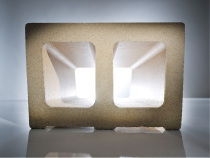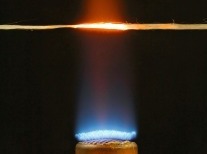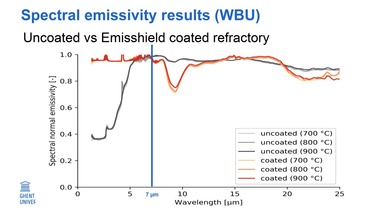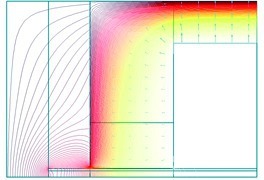Lots of innovations on display in the refractory section
Worldwide each year around 28 million tonnes of refractory materials are produced. They are an important component in thermal processes, for example in the iron and steel industry, and in the cement, glass and ceramics industries. But also in thermal energy generation and in chemicals and petrochemicals plants. The requirements of the individual products are very different: Mechanical, thermal and chemical resistance are key criteria, as well as engineering, easy processability and the possibility of developing customer-specific solutions. The market at present is polarised between simple cheap materials and innovative, high-quality products.
At Ceranitec 2009, which takes place from 20 to 23 October in Munich, the exhibitors in the refractories section are displaying not only a wide range of innovations and new technologies, but also solutions for state-of-the-art processes in ceramics, for example, refractory linings, lightweight refractory bricks and fibre materials for kiln systems, kiln furniture in an energy-efficient design, burner nozzles and various protection systems. It is developments in material design, product functionality and material process technology and processing that can provide answers to critical environmental aspects and economic challenges.
Many market leaders regard Ceramitec as an important platform for presenting their current focal themes. Exhibiting in Hall A5 will be Vesuvius and P-D-Refractories, as well as Imerys, who will be showcasing a new generation of cassettes for firing roof tiles. As a base material the company uses zirconia and high-temperature mullite in technical ceramics and electronics. Another theme are high-temperature protection systems for walls and pipes in kiln rooms.
Saint-Gobain Ceramic Materials will also be addressing this theme with the material silicon carbide in lots of different variations. This international group of companies is presenting for the first time at Ceramitec its solutions for applications in thermal energy generation, chemicals, petrochemicals and metallurgy. In the ceramics section one focal point are intelligent kiln cars and systems.
High temperatures and resistance to temperature change for a wide product spectrum of formed and unformed refractory products and high-temperature wool are the highlights at the stand of Rath AG. At Schunk, too, the emphasis is on high process temperatures, for example, burner nozzles for direct and indirect heating, flame tubes and jet pipes and firing supports for special applications.
Many of the innovative refractory products are no longer just refractory materials in the traditional sense, but high-performance ceramics with outstanding characteristics. Ceramitec in Munich will again be a forum for new-style applications and innovative approaches.




